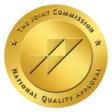Observing World Suicide Prevention Day

Suicide is the 10th leading cause of death in the U.S., with over 47,500 Americans dying by suicide in 2019. As scary as that number is, the 1.38 million suicide attempts in that same year are even more harrowing. If you or someone you care about is showing signs of struggling to cope with the rigors of life, please assure them that they matter and are not alone, and don’t hesitate to learn about how a depression treatment program at Greater Boston Addiction Centers can help by contacting us online or calling 877.920.6583 today.
Observing World Suicide Prevention Day
To observe World Suicide Prevention Day on September 10th in an actionable and potentially life-saving way, let’s look at the risk factors and warning signs of suicide as well as some of the comprehensive suicide prevention techniques you may use in communicating with someone who may be suicidal.
The Risk Factors for Suicide
There are certain common events and universally recognized circumstances that increase the risk of suicide, including:
- Previous suicide attempt(s)
- A family history of suicide
- Substance misuse and use disorder
- Mood disorders like depression and bipolar disorder
- Significant loss, such as a breakup of a relationship or the death of a loved one
- Other factors including academic failures, legal difficulties, financial challenges, bullying
- A sudden catastrophic event or failure
- A history of trauma or abuse
- Physical illness
- Chronic pain
- Exposure to other’s suicidal behavior
- Access to firearms and other lethal means of suicide
The Warning Signs of Suicide
The CDC has reported that more than half of Americans who have died by suicide did not have a known mental health condition. That said, many may have been quietly dealing with mental health issues that were not observed or diagnosed. Therefore they were not offered help or support and possibly felt alone in their battle. Some of the warning signs of suicide include:
- An observed infatuation with death and dying, or suicide
- Comments made about feeling hopeless or worthless
- Stating they have no reason for being alive or no purpose (and saying things like, “It would be better if I weren’t here”)
- Increased alcohol and/or drug use
- A withdrawal from friends and family
- Reckless behavior
- Partaking in risky activities
- Dramatic mood changes
- Talking about feeling trapped
- Words to the effect that they are a burden to others
If you observe any of these warning signs in people in your life, there are steps you can take. Here are some suicide prevention techniques to reach out and help before suicide claims another life.
Identify and Assist
Many people who need help the most, those in distress and peril, sadly don’t seek the help they need or try to get support on their own. By identifying the people in your life who may be at risk for suicide, you can begin the process of trying to connect them to the professional care and support that may save their life.
Help Them See That They Need Help
One of the pivotal suicide prevention techniques is to help people in your life see that they need help. When you teach people to recognize the times when they need support and go a step further in helping them find it, you play an important role in reducing their suicide risk. There are self-help tools and outreach campaigns available to help you help them lower any existing barriers they’ve built which have been preventing them from obtaining help.
Promote Access to Mental Health Care
One of the key suicide prevention techniques to be aware of during World Suicide Prevention Day is that people at risk of suicide need to have timely access to depression treatment, suicide prevention interventions, and professional, skilled mental health care.
Reduce Access to Means of Suicide
One crucial method of reducing the risk of death by suicide is to prevent those having suicidal thoughts from having access to lethal methods of self-harm. Some examples include:
- Educating family and friends about safely storing medications
- Locking up all firearms
- Encouraging gun safety locks
Life Skills Training and Building Resilience
Life skills training can instill invaluable lessons such as critical thinking, stress management, and coping skills. In addition to depression treatment, these life skills can be tools to help people safely address life’s many challenges. Developing resiliency is also an important protective factor because it can help with the ability to cope with adversity and adapt to change in a healthy way.
Promote Social Connectedness
People who turn to suicide “as a way out” often lack the supportive relationships and community connectedness human beings need to live full, healthy lives. You can help enhance their connectedness by promoting social programs for specific population groups (like LGBT youth, for example) and encouraging participation in activities that reduce isolation and increase a sense of belonging.
Learn More at Greater Boston Addiction Centers
Learn how a depression treatment program at Greater Boston Addiction Centers can help reduce the risk of suicide and be a step in living a happier and healthier life. Contact us using our secure online form or call us confidentially at 877.920.6583 today.
Live Sober
Live Connected
Greater Boston Addiction Centers
Rehab Blog
